In the last week, I’ve seen almost 50 wooly bear caterpillars. These caterpillars are also known as “wooly caterpillar”, “bear caterpillars” and “wooly worms” (latin: phyrrhartica isabella). These fuzzy, brown, and black caterpillars come out just as the weather grows cold. I often find hiding in woodpiles or garden mulch getting ready to hibernate till the spring. The cold seems to summon them forth–you see nothing of them all summer, and then, a few weeks before Samhain they are everywhere. And, dear readers, they are here with a message.
These caterpillars, not unlike other famous wildlife in the area, have long been known to predict the harshness of winter. If a wooly bear caterpillar has more brown than black, that means the winter is mild. But, if the caterpillar has more black than brown, the winter will be tough. Here’s a graphic I made to share this wooly bear caterpillar prognostication!
The more advanced version of this was taught to me by my grandfather, George Custer, who said that you can “read” the beginning and end of winter with the caterpillar. The brown and black do matter, but the more black at the beginning of the caterpillar, the harsher the beginning of winter will be. The more black at the back of the caterpillar, the more harsh the end of winter will be, and the more prolonged.
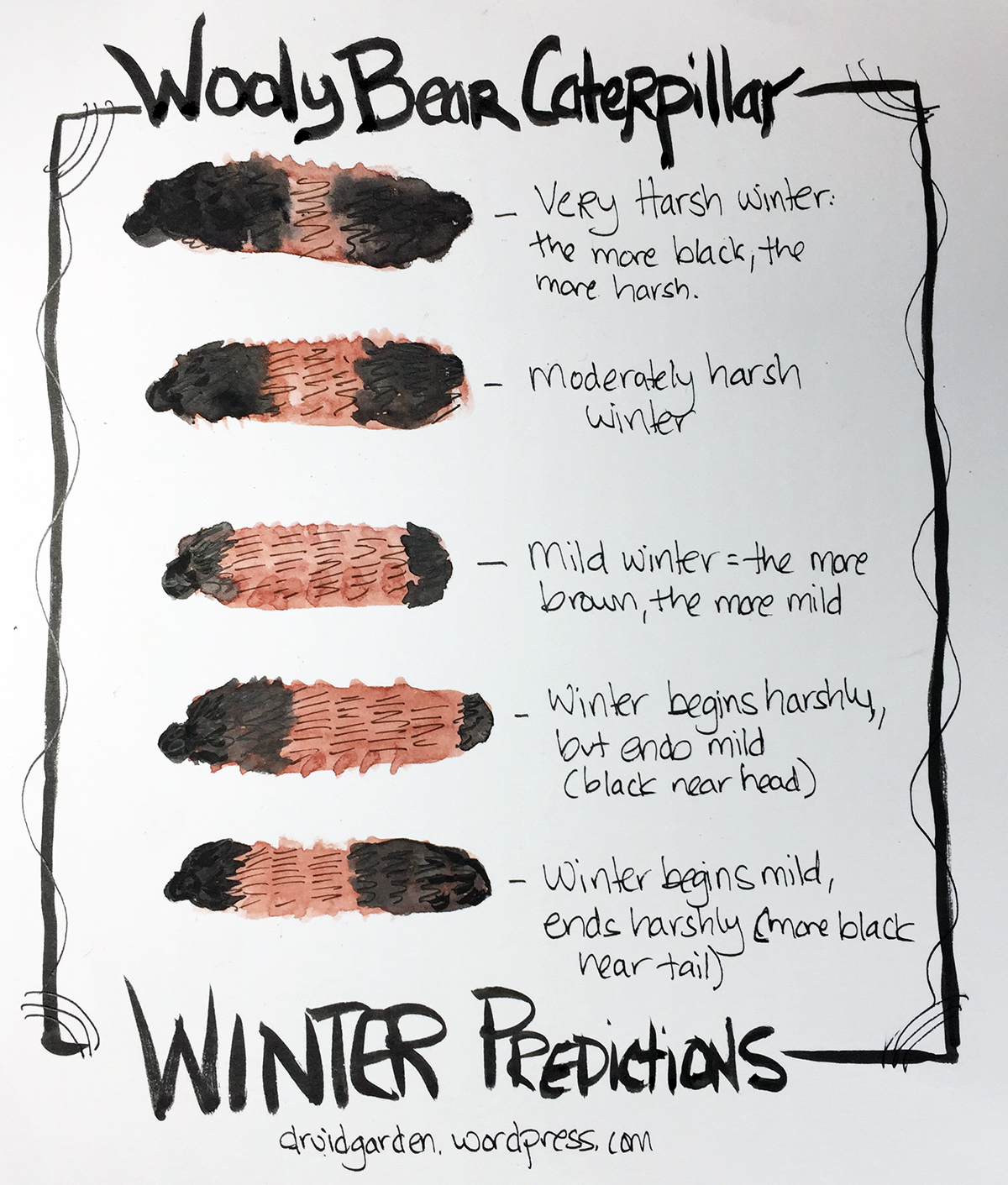
Here are some live examples from photos I’ve taken over the last few years. This wooly was from last year (and did, in fact, predict a terribly harsh and cold winter!)
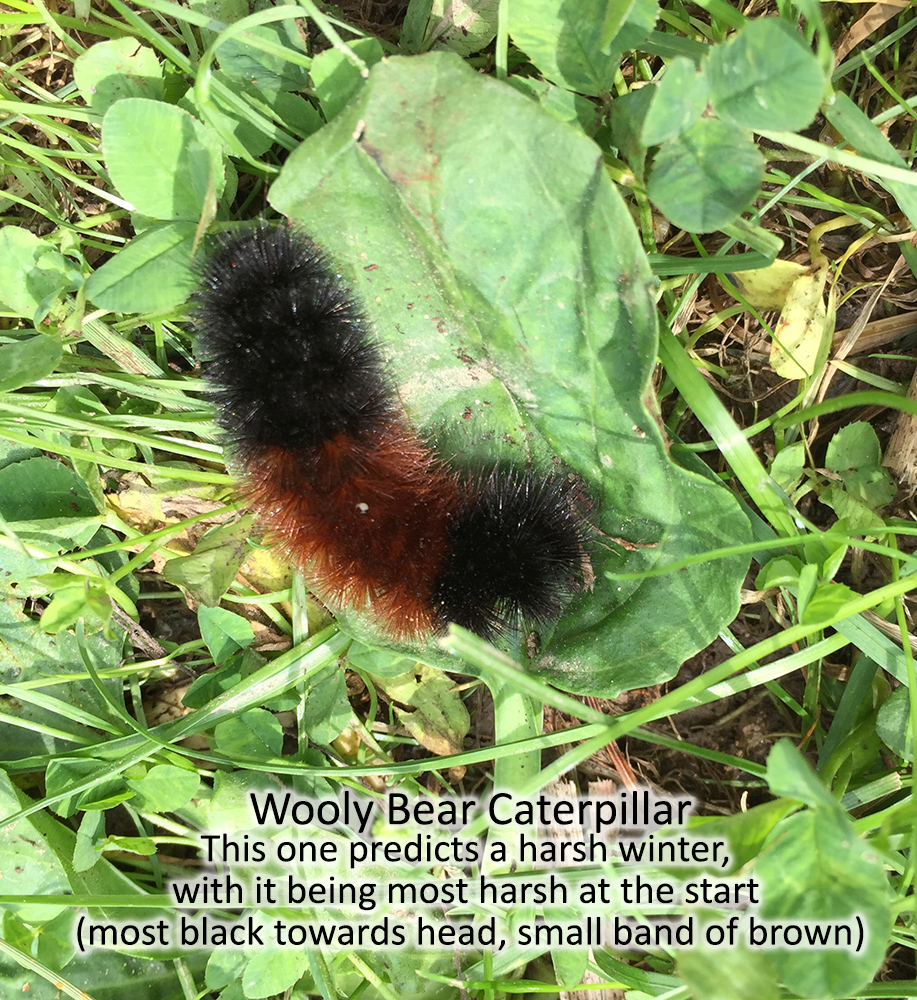
This is a wooly I just found this year–I’m hoping this little guy is right and that winter will be mild and very pleasant!
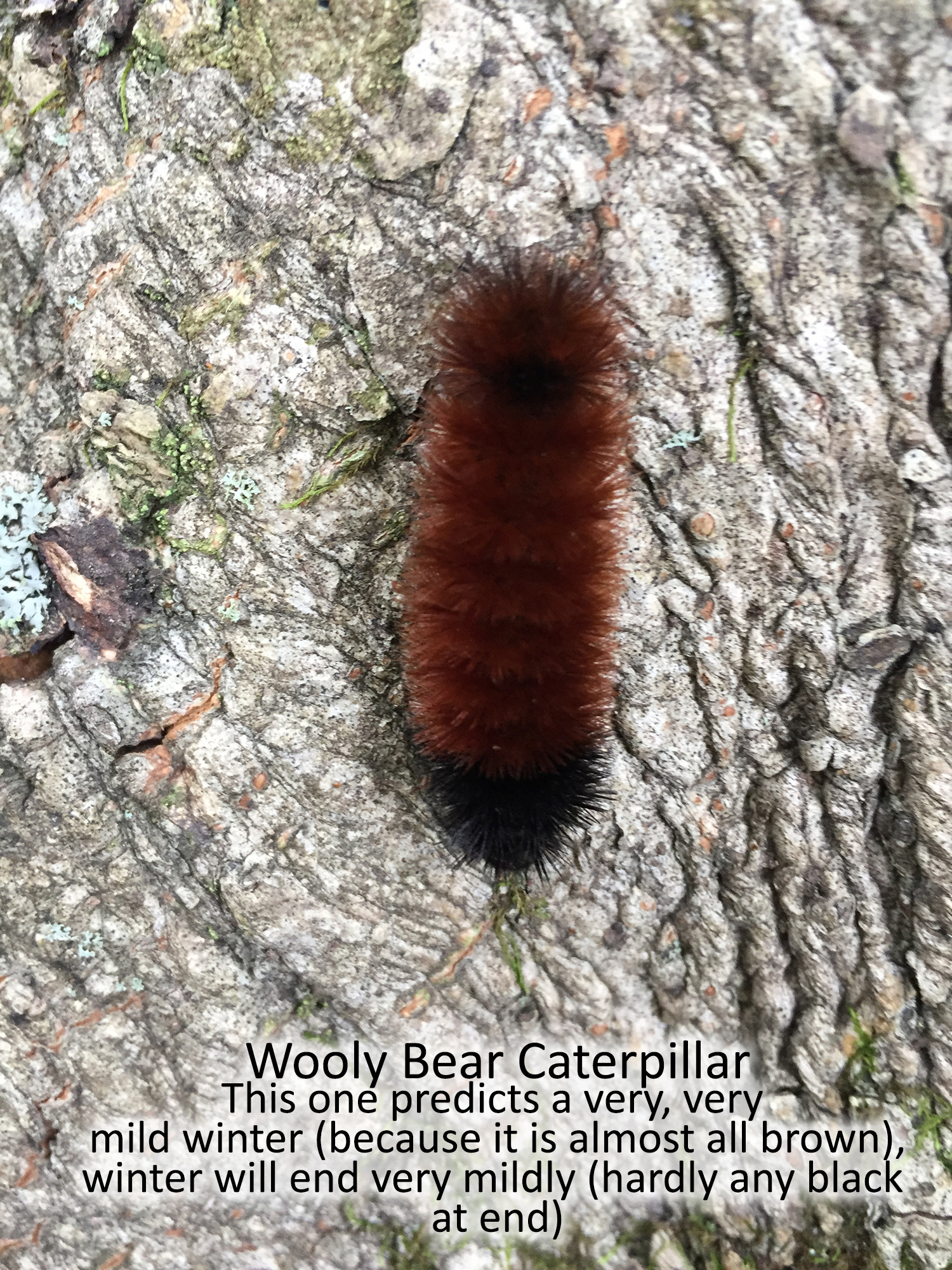
There are stories about where this tradition originated and how it was popularized in the mid 1800’s (you can read more here). This particular folk tradition appears to exist all along the Appalachian mountains, anywhere that the caterpillar typically lives. And the wooly bear is not the only weather prognosticator in this region; we also have Punxsutawney Phil, the groundhog 45 minutes north of where I live who also does weather predictions about winter and the coming of spring.
I think that embracing these kinds of folk traditions is an important part of rewilding our druid and nature-based spiritual practices. These kinds of locally-based traditions get is more in tune and aware of our surroundings. And folk traditions, whether rooted or not in reality, have tremendous power.
Before modern weather prediction, humans relied on a large number of subtle cute from the land and clouds to know what kinds of weather was happening and what to expect both short-term and throughout the winter. Preparation for winter, effective preparation, was critical to survival. Being able to read the land in this way was a skill that many people once had. I don’t think a lot of us realize how much we see without understanding. A book ( Finding Your Way Without a Map or Compass by Harold Gatty). really helped illustrate just how much I didn’t know, and Gatty’s book is a great place to start regaining this lost wisdom. Gatty shares a lot of information about how to read the landscape, the clouds, the trees, and so on to establish prevailing wind patterns, read the weather, and get from one place to another. His is a rather scientific and observational approach. I like to combine his approach with more esoteric approaches, like the wooly bear’s weather predictions. The combination of these things can help us be more aware and prepared in our environment.
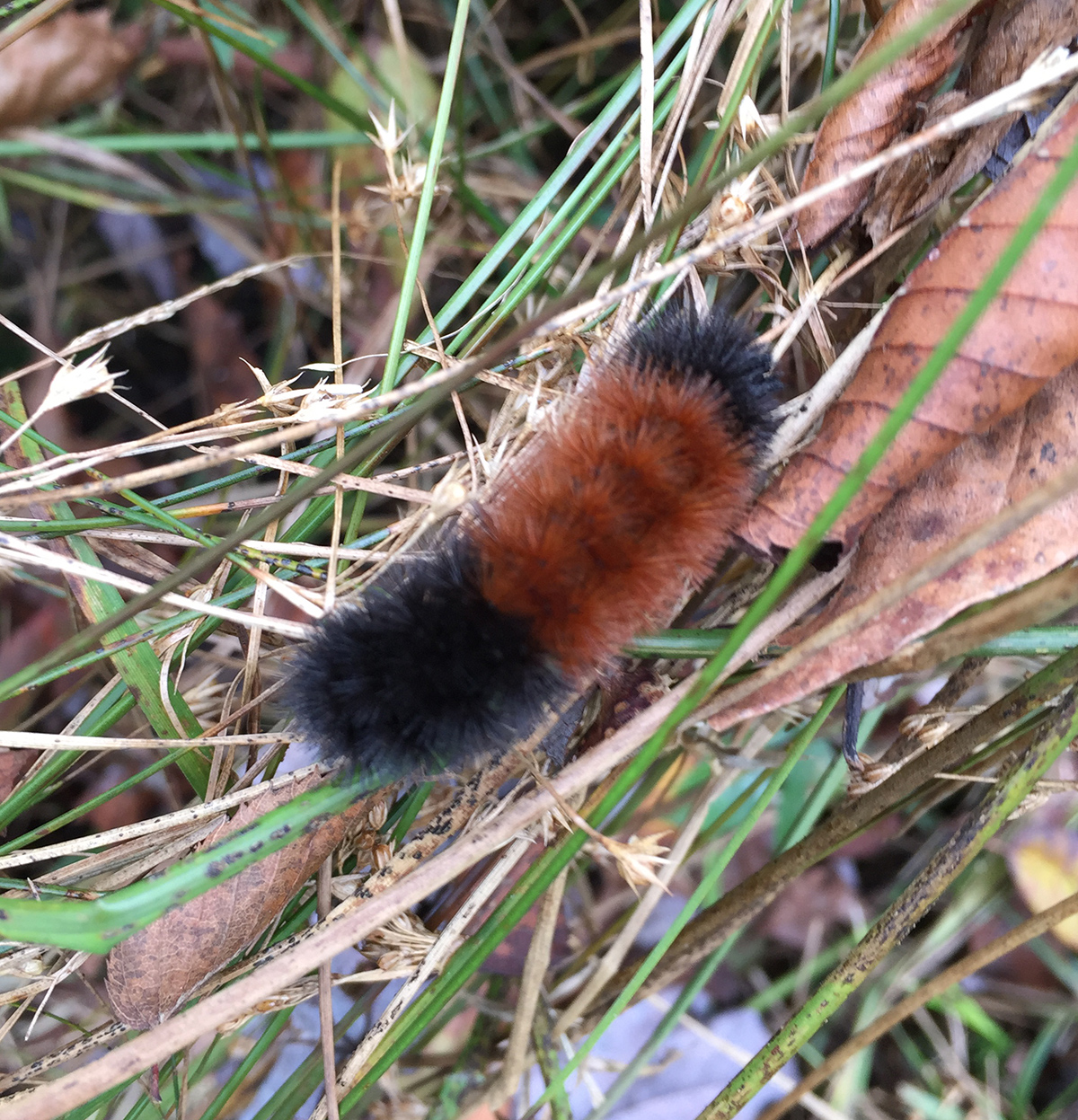
I love seeing the wooly bear caterpillars this time of year. Yes, they say, winter is coming. And yes, you need to prepare. I think its great that they live in my woodpile–just what I need to be attending to before winter comes. I hope that you, dear readers, are settling in. The caterpillars tell me that winter will be fairly mild this year.
(I’d also be delighted to hear about other folk customs of similar animal/insect divinations if you have any to share!)
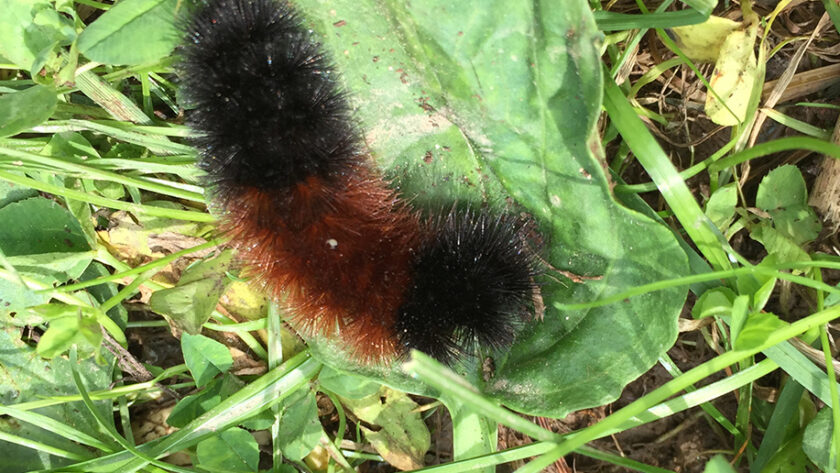



Reblogged this on Paths I Walk.
Thanks for the reblog!
Living in northern Minnesota I saw a wooly bear caterpillar in our yard around September with a small rust red band and larger black bands. I’ve been smelling and feeling winter in my bones since September, and we got our first snow October 9 it’s not a lot but the cold is definitely in the air. Bundle up if you are in a cooler climate!
Thank you for sharing, S. R.! Ours here look to be more mild this year, which I’m really hoping for!
Reblogged this on Blue Dragon Journal.
Thank you for the reblog!
I, too, love woolly bears and remember seeing them in the autumn in northern woods. Thanks for sharing their story.
In sub trupical Mackay, Queensland, Australia, we are currently enjoying spring. The temps are already upwards of 26 degrees Celsius and humid. The large, harmless, Huntsman spider lives in the mulch in garden beds. Occasionally they will find their way into the house but, I have observed that they’re movement enmasse, signals a weather change. Many more Huntsman spiders than a usual occasional one, can be found in the house just before rain. Of course, you’ll find them inside during a lot of rain as well, but that’s because they are waterlogged in the garden.
Ants are also a great indicator of impending rain events. When they arrive in the kitchen and I notice them moving frantically in the garden, you can be sure we are in for an extended rainy season. They’re moving to higher ground.
That’s awesome! I wonder how animals or insects “know” and what things they can sense, what subtle clues the have, that we can’t see.
Locally, I have yet to see any woolly bears this year. They should be abundant now.Maybe they moved to a warmer climate? It has been a different sort of summer around here as well. Most years the Grey Tree Frogs are around windows at night and calling in the daytime. This summer we had very few of them. A long cool spring and dry summer may have played a part in it. I sure did miss them, though.
I’ve seen a number of maps talking about species moving northward up the US east coast as it gets progressively warmer. Not sure about the wooly bears. One of the big issues here is the Cherry Tree, which is a huge export in PA, and we are losing them as it gets warmer.
We’ve had an extremely wet month since mid-September til now but this week has been dry and cool with beautiful blue skies– a lovely reward after weeks of gloom and damp chill! Signs of winter may show up in the previous spring, I’ve noticed, in heavier than usual blooms on flowering trees like apples, crabapples, etc. Same with some conifers. The more prolific the blooming or coning, the heavier the winter to come. For now, I’m seeing dark-eyed juncos which are a signal of winter locally, and of course the Winter King rises in the East now. I used to wonder where the constellation Orion “went” in the summer, if the axial tilt made him appear higher/more north, or lower/more south. After some observation, I believe it’s simply that the Sun lights the sky for much less time, making him visible sooner. At any rate, Orion has long been my signal to begin turning my attention to winding-down tasks in the yard.
Yes, like you, we’ve had the wettest of wet summers. We are almost 50% above average rainfall, with the wettest summer on record. So its very interesting to see how the land adapts. I haven’t yet seen any Juncos, but they are certainly a sure sign of winter soon!
I love your relationship with Orion! What a great observation.
Reblogged this on dreamweaver333.
Thanks for the reblog!
Reblogged this on ravenhawks' magazine.
Thanks for the reblog!
Here in Kansas we have the yellow-billed cuckoo, also known as the rain crow because supposedly it gives out its distinctive call (NOT like a cuckoo clock cuckoo) when it is going to rain. However, I was disappointed when during a summer of drought I heard it’s call a number of times and no rain followed. Still, I hear the calls infrequently and love it when they do call.
That’s a great story. I looked up a picture of the yellow-billed cuckoo–what a cool bird!
It’s not local but the new Farmers Almanac agrees with the caterpillar In the Rockies we go by the squirrels fur, if bulky, lots of snow & cold, and if the fur is light, not harsh. Thx, good article!
Thanks for sharing!
Reblogged this on Rattiesforeverworldpresscom.
[…] Weather Prognostication and the Wooly Bear Caterpillar The Druid’s Garden […]
Thanks for the reblog!